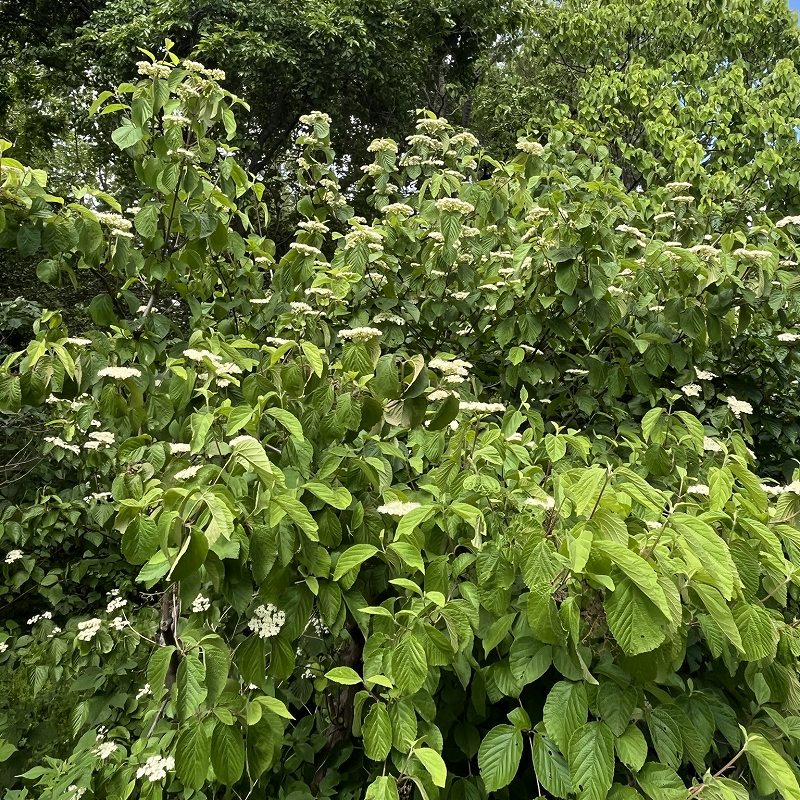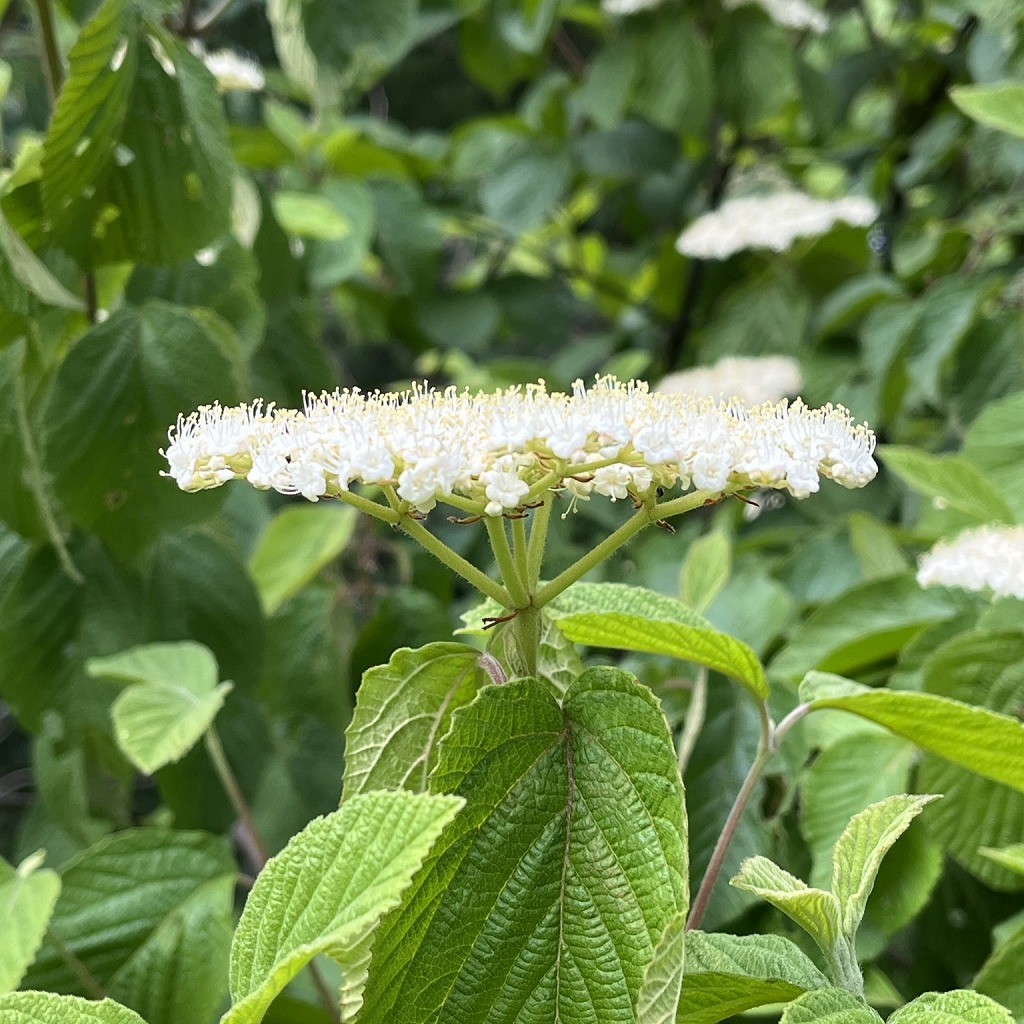ガマズミは山野に自生する落葉低木。野趣溢れる枝葉、細雪のような花々、艶やかに紅熟する果実、錆色に染まる紅葉が春夏秋冬を彩ります。
Linden Viburnum is a deciduous shrub that grows naturally in the fields and mountains. New shoots and leaves, flowers that look like fine snow, brightly ripening red fruits, and rust-colored autumn leaves add color to the four seasons.
【仮名】ガマズミ
【和名】莢?, 蒲染
【英名】Linden Viburnum, Linden Arrowwood
【学名】Viburnum dilatatum
【誕生】06/ 22, 11/ 24
【開花】05, 06月
【花色】White






ガマズミ
ガマズミの概要
ガマズミはガマズミ科の落葉低木です。日本では北海道南西部から本州、四国、九州まで、国外では朝鮮半島、中国など東アジアに分布し、山野の日当たりのよいところに自生。野趣溢れる枝葉、細雪のような花々、艶やかに紅熟する果実、錆色に染まる紅葉が、春夏秋冬を彩ります。
ガマズミの名前
ガマズミの名前の由来は諸説あり、赤色の果実を意味する「かがずみ」の転訛のほか、材を農具の柄に使ったので「鎌」、葉の形が甲羅に似ているので「亀」、果実が酸っぱいので「酸実」、果実を衣類の着色に用いたので「染め」など、それぞれを組み合わせた名前ともいわれます。
ガマズミの姿形
ガマズミは枝に毛が密生。葉は対生し、幅広の卵形で、縁に浅い鋸歯が入ります。表も裏も毛が生えてザラザラ。花は白く小さく、枝先で平らに密集して咲きます。花冠が5裂、雄しべが5本、雌しべが3裂。栗の花に似た匂いが遠くまで漂います。花後は長球形の核果を結んで紅熟。
ガマズミの近縁
ガマズミの近縁「深山莢蒾」は山地のやや高いところに自生し、葉の先端が尖り、表面に絹毛が生えます。「小葉莢蒾」は関東以西の太平洋側に自生し、葉の柄が短く、幅が狭く、表面に短毛が密生。「男ようぞめ」は北陸を除く山地に自生し、花の数が少なく、果実も痩せています。
ガマズミの利用
ガマズミの果実は表面に白色の粉が吹くころ、最も甘味が増し、鳥が食べにやってきます。少し渋味があるものの、生食のほか、大根と一緒に漬けて赤色と酸味を加えたり、蒸留酒に漬けて疲労回復や利尿に。材は強靭で農具の柄などに、枝も丈夫でモノを束ねるのに用いられました。
Linden Viburnum
Linden Viburnum is a deciduous shrub of the Viburnaceae family. In Japan, it is distributed from the southwestern part of Hokkaido to Honshu, Shikoku, and Kyushu, and overseas, it is distributed in East Asia such as the Korean Peninsula and China. New shoots and leaves, flowers that look like fine snow, brightly ripening red fruits, and rust-colored autumn leaves add color to the four seasons.
The Japanese name Linden Viburnum is believed to have multiple meanings. “Red fruit” from the appearance, “scythe” because the material was used for the handle of agricultural tools, “tortoise” because the shape of the leaf resembles a shell, “sour fruit” from the taste, and “dyeing” because the clothes were dyed with the fruit.
Linden Viburnum has dense hairs on its branches. The leaves are opposite, broadly ovate, and have shallow serrated margins. Both the front and back are hairy and rough. The flowers are small, white, and grow flat and clustered at the tips of the branches. Corolla 5-lobed, stamens 5-lobed, pistil 3-lobed. A scent resembling chestnut flowers wafts far away. After flowering, long globular drupes are formed and red ripening.
A close relative of Linden Viburnum, “Viburnum wrightii” grows naturally in slightly higher places in mountainous areas, and has pointed tips of leaves and silky hairs on the surface. “Viburnum erosum” grow naturally on the Pacific Ocean side west of Kanto, and the leaves have short petioles, narrow widths, and dense short hairs on the surface. “Viburnum phlebotrichum” grows naturally in mountainous regions except Hokuriku, and has few flowers and thin fruits.
Linden Viburnum berries are sweetest when a white powder appears on the surface, attracting birds to eat. Although they have a slightly astringent taste, they can be eaten raw, pickled together to add a red color and sourness to the radish, or pickled in distilled sake to recover from fatigue and diuretic. The wood is strong enough to be used as a handle for agricultural tools, and the strong branches are used to bundle things together.


